-
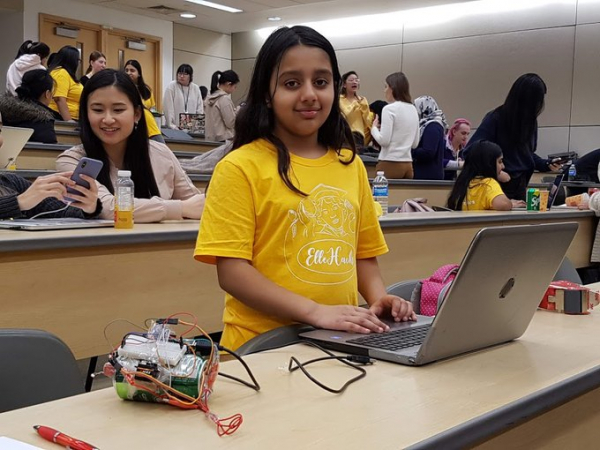 EducationWhat did you do with your weekends when you were 10 years old? We bet it wasn’t participate in a women-driven hackathon where you developed your own functioning neural robot! (We bet you wish you did, though.) Arushi Nath, age 10, recently participated in Elle Hacks 2020, an all-women hackathon hosted by York University […]
EducationWhat did you do with your weekends when you were 10 years old? We bet it wasn’t participate in a women-driven hackathon where you developed your own functioning neural robot! (We bet you wish you did, though.) Arushi Nath, age 10, recently participated in Elle Hacks 2020, an all-women hackathon hosted by York University […] -
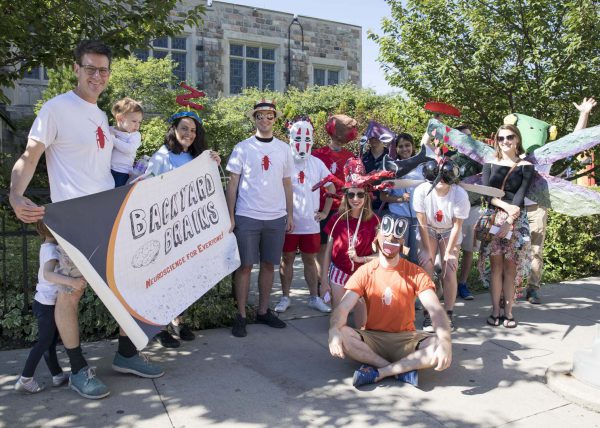 EducationOver 11 sunny Ann Arbor weeks, our research fellows worked hard to answer their research questions. They developed novel methodologies, programmed complex computer vision and data processing systems, and compiled their experimental data for poster, and perhaps even journal, publication. But, alas and alack… all good things must come to an end. Fortunately, in research, […]
EducationOver 11 sunny Ann Arbor weeks, our research fellows worked hard to answer their research questions. They developed novel methodologies, programmed complex computer vision and data processing systems, and compiled their experimental data for poster, and perhaps even journal, publication. But, alas and alack… all good things must come to an end. Fortunately, in research, […] -
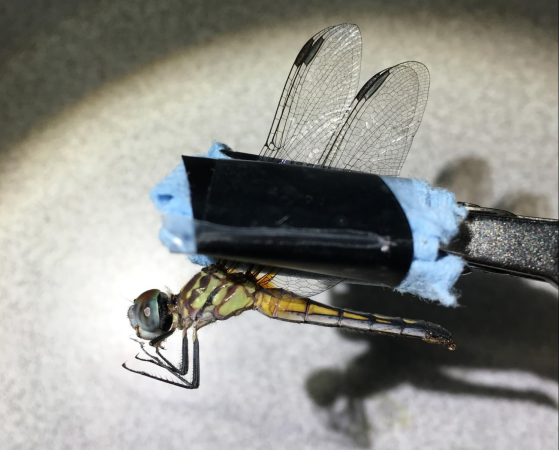 EducationWelp, it’s my last day of work here at Backyard Brains! It’s been a fun 11 weeks with my fellow interns, but all things must end. Last week we wrapped up all the TED filming for our mini series episodes. I had a great time, and I’m really looking forward to seeing the final result. The […]
EducationWelp, it’s my last day of work here at Backyard Brains! It’s been a fun 11 weeks with my fellow interns, but all things must end. Last week we wrapped up all the TED filming for our mini series episodes. I had a great time, and I’m really looking forward to seeing the final result. The […] -
 EducationToday our Summer Research Fellows “snuck in” and presented their summer work at a University of Michigan, Undergraduate Research Opportunity Program (UROP) symposium! Over the two sessions our fellows presented their work and rigs to judges, other students, to university faculty, and community members. Some of the fellows are seasoned poster designers, but others had […]
EducationToday our Summer Research Fellows “snuck in” and presented their summer work at a University of Michigan, Undergraduate Research Opportunity Program (UROP) symposium! Over the two sessions our fellows presented their work and rigs to judges, other students, to university faculty, and community members. Some of the fellows are seasoned poster designers, but others had […] -
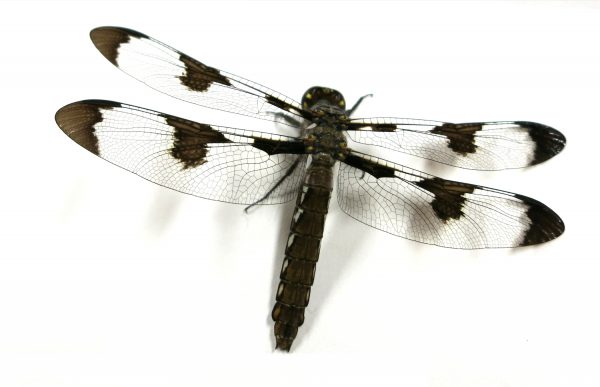 EducationChanging Course In my last post, I talked about how I was essentially replicating the Paloma article (previously linked) in a DIY manner. This is no longer the case. The primary goal at this point is to record from the TSDN tracts, located on the ventral portion of the dragonfly’s “neck” area (seen as two white lines […]
EducationChanging Course In my last post, I talked about how I was essentially replicating the Paloma article (previously linked) in a DIY manner. This is no longer the case. The primary goal at this point is to record from the TSDN tracts, located on the ventral portion of the dragonfly’s “neck” area (seen as two white lines […] -
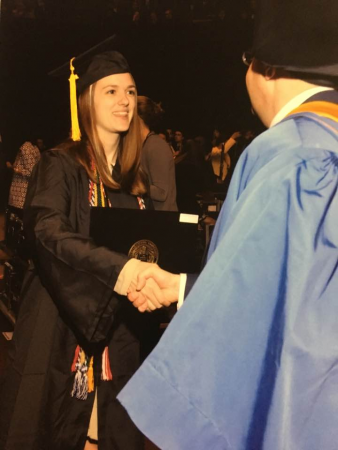 EducationAbout Me Hi everyone, I’m Jaimie. I just graduated from Boston’s Northeastern University in Behavioral Neuroscience. My academic background is in biology, but I picked up some engineering and coding skills through previous lab research. Originally I’m from the Chicago area, so I’m pretty familiar with the Midwest atmosphere, though I had never been to Ann […]
EducationAbout Me Hi everyone, I’m Jaimie. I just graduated from Boston’s Northeastern University in Behavioral Neuroscience. My academic background is in biology, but I picked up some engineering and coding skills through previous lab research. Originally I’m from the Chicago area, so I’m pretty familiar with the Midwest atmosphere, though I had never been to Ann […] -
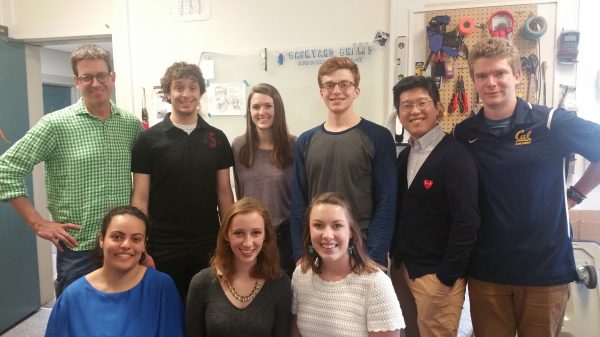 EducationIt’s early on a warm Ann Arbor morning and the office is buzzing with excitement! Our Summer 2017 research fellows are here! Today, our fellows are getting to know the staff and space at Backyard Brains, but more importantly, they’re planning, because for the next ten weeks they will be working on neuroscience and engineering […]
EducationIt’s early on a warm Ann Arbor morning and the office is buzzing with excitement! Our Summer 2017 research fellows are here! Today, our fellows are getting to know the staff and space at Backyard Brains, but more importantly, they’re planning, because for the next ten weeks they will be working on neuroscience and engineering […] -
![[Summer’16 Internship] The Dragonfly: Nature's Guided Missile](https://cdn.hackaday.io/images/5039591466595737682.jpg) EducationDESCRIPTION The dragonfly can capture its prey mid-air with a 95% accuracy rate. What biological equipment does the dragonfly have that allows it to do this amazing feat? To examine this very question, I will be replicating Paloma T. Gonzalez-Bellido’s 2012 PNAS paper using DIY open source tools. Gonzalez-Bellido found that there are neurons that run […]
EducationDESCRIPTION The dragonfly can capture its prey mid-air with a 95% accuracy rate. What biological equipment does the dragonfly have that allows it to do this amazing feat? To examine this very question, I will be replicating Paloma T. Gonzalez-Bellido’s 2012 PNAS paper using DIY open source tools. Gonzalez-Bellido found that there are neurons that run […] -
InternshipThe next steps of the project are… 1) set up a coordinate system in Matlab so by inputing the change in degrees of the servos, I can know the change in position on the screen. 2) Using Matlab, create figures that relate the neural activity to the position and direction of the laser beam. 3) Test with dragonfly […]
-
![[Summer’16 Internship] The Dragonfly: Manipulating the code for the laser set-up](https://cdn.hackaday.io/images/8054991468207724760.png) EducationIn order to replicate Paloma Gonzalez-Bellido’s experiment, I need to be able to manipulate the direction and position of the laser beam. In Paloma Gonzalez- Bellido’s 2012 paper she publish these results: Gonzalez-Bellido, P. T., H. Peng, J. Yang, A. P. Georgopoulos, and R. M. Olberg. “Cozzarelli Prize Winner: Eight Pairs of Descending Visual Neurons in […]
EducationIn order to replicate Paloma Gonzalez-Bellido’s experiment, I need to be able to manipulate the direction and position of the laser beam. In Paloma Gonzalez- Bellido’s 2012 paper she publish these results: Gonzalez-Bellido, P. T., H. Peng, J. Yang, A. P. Georgopoulos, and R. M. Olberg. “Cozzarelli Prize Winner: Eight Pairs of Descending Visual Neurons in […] -
EducationGiven the previous problems, I then started on a new set-up hopeing to 1) solve the curvature of the beam problem 2) make a more stable, cleaner set-up. The final result: What I did: I cut wood to use for a stand, and used an acrylic sheet for a base. I made the Y servo mirror much longer […]
-
EducationI built a servo laser set-up (prototype 2) that allows me to control the movement of the laser beam across a curved screen using an X direction servo and a Y direction servo. Below is the final result of prototype 2: The problems: The hot glue on the mirrors makes the mirrors tilt at an angle, and not […]
![[Summer’16 Internship] The Dragonfly: Laser set-up, version 3](https://cdn.hackaday.io/images/706161468206314381.JPG)
![[Summer’16 Internship] The Dragonfly: Building a servo laser set-up, prototype 2](https://cdn.hackaday.io/images/2820971468205099958.JPG)